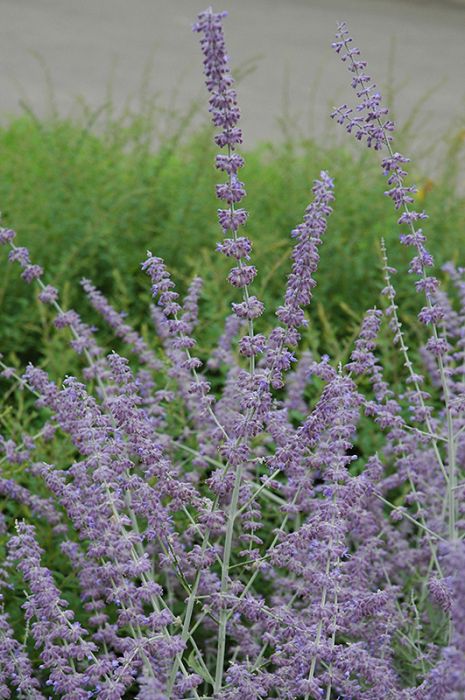Perovskia, Russian Sage


Out of stock
Sold out for the season- Sun Preference
- Full-Sun
- Bloom or Harvest Time
- July, August, September
Description
1995 Perennial Plant of the Year. Airy spires of soft lavender blue flowers with silvery, dissected, aromatic foliage. Good for mass plantings or as an accent.
Minnesota's Largest Selection of Perennials
Discover an unparalleled selection of perennials at Gertens! With the largest variety in Minnesota, we offer endless options of colorful perennials, natives, and pollinator plants to beautify your garden year after year. From vibrant flowers to lush foliage, our perennials are perfect for adding beauty and charm to your outdoor space. Visit Gertens today and see why we're known as Minnesota's Destination Garden Center!
Details
Russian Sage | Perovskia atriplicifolia
Plant Height: 3 feet
Flower Height: 4 feet
Spacing: 30 inches
Sunlight: full sun
Hardiness Zone: 4a
Brand: Gertens
Description:
Not a true sage, but has a lovely scent; 1995 Perennial Plant of the Year; Airy spires of soft lavender flowers over silvery dissected foliage. Drought resistant
Ornamental Features
Russian Sage features delicate spikes of lavender flowers rising above the foliage from early summer to mid fall. The flowers are excellent for cutting. Its attractive fragrant narrow leaves emerge silver in spring, turning grayish green in color throughout the season.
Landscape Attributes
Russian Sage is an herbaceous perennial with an upright spreading habit of growth. It brings an extremely fine and delicate texture to the garden composition and should be used to full effect.
This is a relatively low maintenance plant, and is best cut back to the ground in late winter before active growth resumes. It is a good choice for attracting butterflies to your yard, but is not particularly attractive to deer who tend to leave it alone in favor of tastier treats. It has no significant negative characteristics.
Russian Sage is recommended for the following landscape applications;
- Mass Planting
- General Garden Use
- Naturalizing And Woodland Gardens
Planting & Growing
Russian Sage will grow to be about 3 feet tall at maturity extending to 4 feet tall with the flowers, with a spread of 30 inches. When grown in masses or used as a bedding plant, individual plants should be spaced approximately 30 inches apart. It grows at a fast rate, and under ideal conditions can be expected to live for approximately 10 years. As an herbaceous perennial, this plant will usually die back to the crown each winter, and will regrow from the base each spring. Be careful not to disturb the crown in late winter when it may not be readily seen!
This plant should only be grown in full sunlight. It prefers dry to average moisture levels with very well-drained soil, and will often die in standing water. It is not particular as to soil type, but has a definite preference for alkaline soils. It is highly tolerant of urban pollution and will even thrive in inner city environments. This species is not originally from North America.
More Information
| Bloom or Harvest Time | July, August, September |
|---|---|
| Sun Preference | Full-Sun |
| USDA Hardiness Zone | 4, 5, 6, 7, 8, 9 |
| Common Family Name | Russian Sage |
| Mature Spread (Range) | 12" - 24", 24" - 36" |
| Mature Height (Range) | 25" - 36" |


